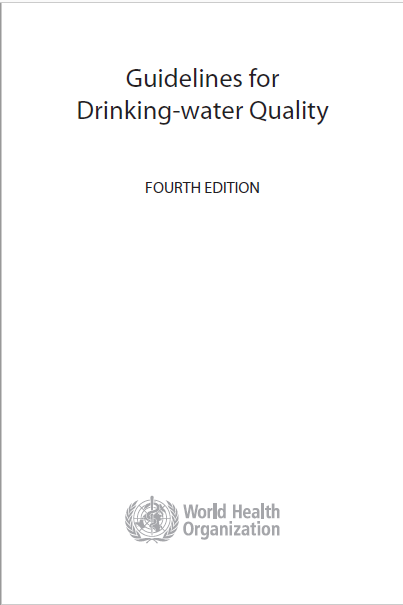Guidelines for Drinking-water Quality
 Access to safe drinking-water is essential to health, a basic human right and a component of effective policy for health protection.
Access to safe drinking-water is essential to health, a basic human right and a component of effective policy for health protection.
The importance of water, sanitation and hygiene for health and development has been reflected in the outcomes of a series of international policy forums. These
have included health-oriented conferences such as the International Conference on Primary Health Care, held in Alma-Ata, Kazakhstan (former Soviet Union), in 1978. They have also included water-oriented conferences such as the 1977 World Water Conference in Mar del Plata, Argentina, which launched the water supply and sanitation decade of 1981–1990, as well as the Millennium Development Goals adopted by the General Assembly of the United Nations (UN) in 2000 and the outcome of the Johannesburg World Summit for Sustainable Development in 2002. The UN General Assembly declared the period from 2005 to 2015 as the International Decade for Action, “Water for Life”. Most recently, the UN General Assembly declared safe and clean drinking-water and sanitation a human right essential to the full enjoyment of life and all other human rights.
Access to safe drinking-water is important as a health and development issue at national, regional and local levels. In some regions, it has been shown that investments in water supply and sanitation can yield a net economic benefit, as the reductions in adverse health effects and health-care costs outweigh the costs of undertaking the interventions. This is true for investments ranging from major water supply infrastructure through to water treatment in the home. Experience has also shown that interventions in improving access to safe water favour the poor in particular, whether in rural or urban areas, and can be an effective part of poverty alleviation strategies.
The World Health Organization (WHO) published three editions of the Guidelines for drinking-water quality in 1983–1984, 1993–1997 and 2004, as successors to
previous WHO International standards for drinking water, published in 1958, 1963 and 1971. From 1995, the Guidelines have been kept up to date through a process of rolling revision, which leads to the regular publication of addenda that may add to or supersede information in previous volumes as well as expert reviews on key issues preparatory to the development of the Guidelines.
Leading the process of the development of the fourth edition was the Water, Sanitation, Hygiene and Health Unit within WHO Headquarters, with the Programme on Chemical Safety providing input on chemical hazards and the Radiation and Environmental Health Unit providing input on radiological hazards. All six WHO Regional Offices participated in the process, in consultation with Member States.
This edition of the Guidelines for drinking-water quality integrates the third edition, which was published in 2004, with both the first addendum to the third edition, published in 2006, and the second addendum to the third edition, published in 2008. It supersedes previous editions of the Guidelines and previous International Standards.
